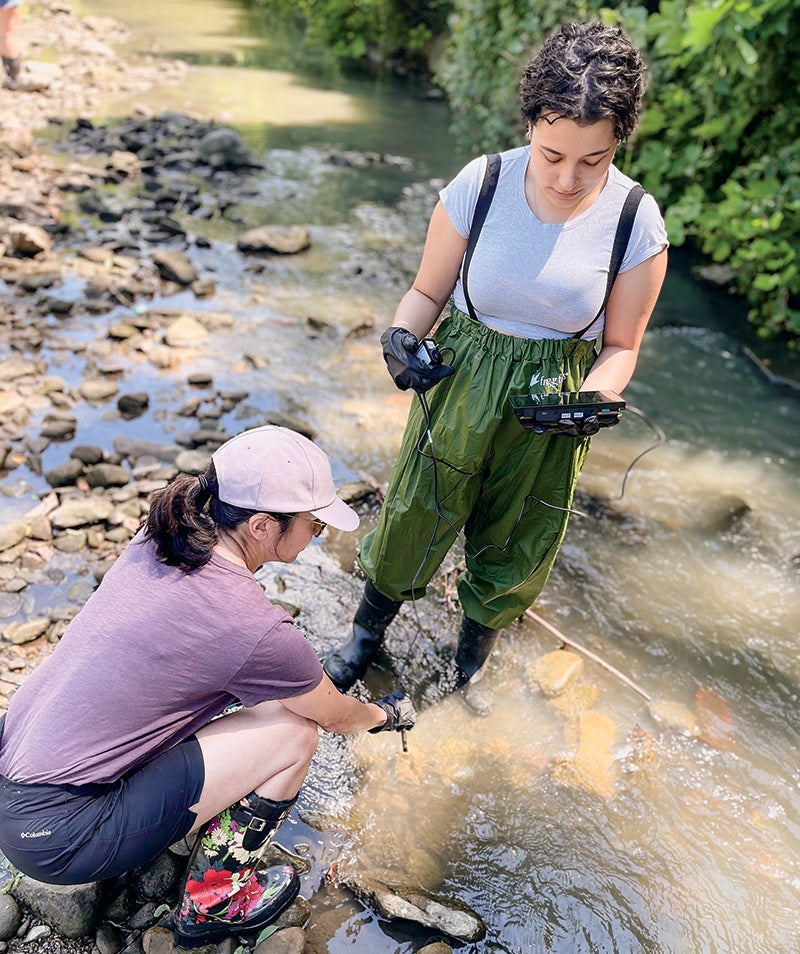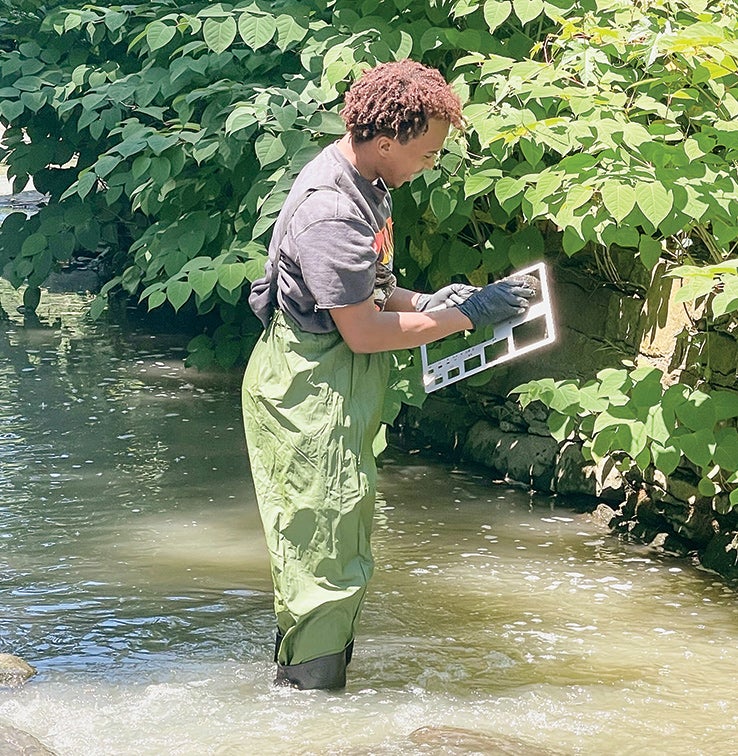lens
Stream Team
Water-quality initiative engages campus students, Cleveland schools

Carole Tooker, a Cleveland area elementary school teacher, and Jennifer Unzueta, a third-year CWRU student, measured the electrical conductivity of water to estimate how much salt was in the Doan Brook in University Circle. A lower level of conductivity suggests better water quality with fewer inorganic ions such as sodium and chloride.
Dana Campbell wants her students at Cleveland's Max Hayes High School to understand firsthand how societal actions have environmental consequences.
Case Western Reserve University third-year student Tiger Newman wants teens to know "there is a bigger world out there"—and they can be part of it.
And so, on a warm afternoon in June, the two waded into Doan Brook near campus, paired in Salt-Fresh, a year-round Case Western Reserve University-led stream-monitoring program to track the effects of road salt on rivers and streams.
The program, organized by the university's Leonard Gelfand STEM Center, brought together CWRU students and 7th-to-12th-grade teachers from Cleveland and neighboring communities to introduce them to protocols and have them practice collecting and analyzing various kinds of stream samples to assess the water quality. They tested levels of oxygen and coliform bacteria from feces, for example. They also found invertebrates, such as crawfish and beetles, whose presence suggested a healthier ecosystem because they need nurturing conditions to survive.
During this school year, the teachers—assisted by the CWRU undergraduates—will periodically take their students to streams to conduct further monitoring. The work will culminate in developing community action plans suggesting ways to protect local streams.

Third-year CWRU student Tiger Newman used a gravelometer to estimate the size of rocks in the Doan Brook streambed. The proportions of sand, gravel, cobble and boulders is an indicator of the suitability of Doan Brook to support living organisms.
"Salt-Fresh aligns closely with one of the Gelfand Center's goals: to create emotional and intellectual connections to local freshwater resources," said James Bader (GRS '89, biology), executive director of the Gelfand Center, which introduces students and teachers, pre-K through high school, to scientific and engineering practices and concepts.
For Campbell—an intervention specialist who teaches science to students with a broad range of physical and cognitive disabilities—the program provides opportunities for hands-on, real-world learning and discussions about big topics, like caring for the planet, in relatable ways. She plans to ask her students questions like: "We all want salt trucks to come in the winter, but what do you think happens to the salt?"
Newman had never been in a waterway examining its ecosystem. But the experience in June made him feel a strong personal connection—and he believes high school students will feel that as well. "This is my community," he said. "This is all the water we have in the world, and we have to protect it."
— ALAINA BARTEL





